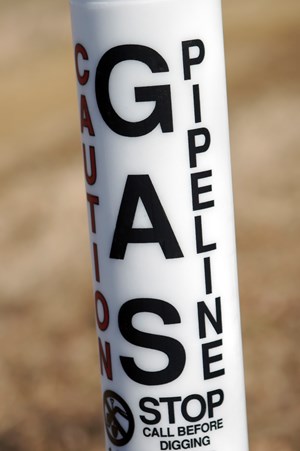U.S. Department of Energy Announces $33 Million for Natural Gas Pipeline Retrofitting Projects
(UC) – The U.S. Department of Energy has announced $33 million in funding for 10 projects dedicated to developing technology to rehabilitate natural gas pipelines.
The funding is part of the Advanced Research Projects Agency-Energy’s (ARPA-E) Rapid Encapsulation of Pipelines Avoiding Intensive Replacement (REPAIR) program.
REPAIR teams will develop natural gas transmission pipeline retrofitting technology to rehabilitate existing cast iron and bare steel pipes by creating new, robust pipes inside of old ones.
“The United States is now the world’s largest producer of oil and natural gas and in order to keep up with this growing industry, it is imperative we modernize and build out infrastructure to safely and efficiently bring this product to market,” said Under Secretary of Energy Mark W. Menezes.
“Natural gas is a crucial energy source for 75 million American households and businesses,” said ARPA-E Director Lane Genatowski. “REPAIR teams will develop technology that enables gas utilities to update their distribution systems at low cost and continue to reliably service commercial and residential gas delivery needs nationwide.”
The selected REPAIR teams are developing smart coatings, robotic systems to line the inside of pipes, inspection tools to verify the integrity of the pipes, and mapping tools to enable 3D renderings of pipes and adjacent underground infrastructure.
Technologies developed through these projects are working to extend the life of rehabilitated pipes by a minimum of 50 years and ensuring they have sufficient material properties to operate without reliance on the exterior pipe, all while meeting utility and regulatory requirements for use in natural gas distribution pipes.
Legacy pipes are still in use today and make up roughly 3% of distribution pipes in use. These legacy pipes account for a disproportionate number of leaks compared to modern infrastructure.
REPAIR teams are developing technologies to address deficiencies while also working toward a 10-to-20-times reduction in cost per mile.
For the full list of projects click here.
Related News
From Archive

- Glenfarne Alaska LNG targets late-2026 construction start for 807-mile pipeline project
- U.S. water reuse boom to fuel $47 billion in infrastructure spending through 2035
- $2.3 billion approved to construct 236-mile Texas-to-Gulf gas pipeline
- Major water pipe break in Puerto Rico hits over 165,000 customers
- Potomac River Tunnel project enters construction phase beneath Washington, D.C.
- Pennsylvania American Water launches interactive map to identify, replace lead water service lines
- Trump's tariffs drive $33 million cost increase for Cincinnati sewer project
- Utah city launches historic $70 million tunnel project using box jacking under active rail line
- Tulsa residents warned after sewer lines damaged by boring work
- Fatal trench collapse halts sewer construction in Massachusetts; two workers hospitalized




Comments